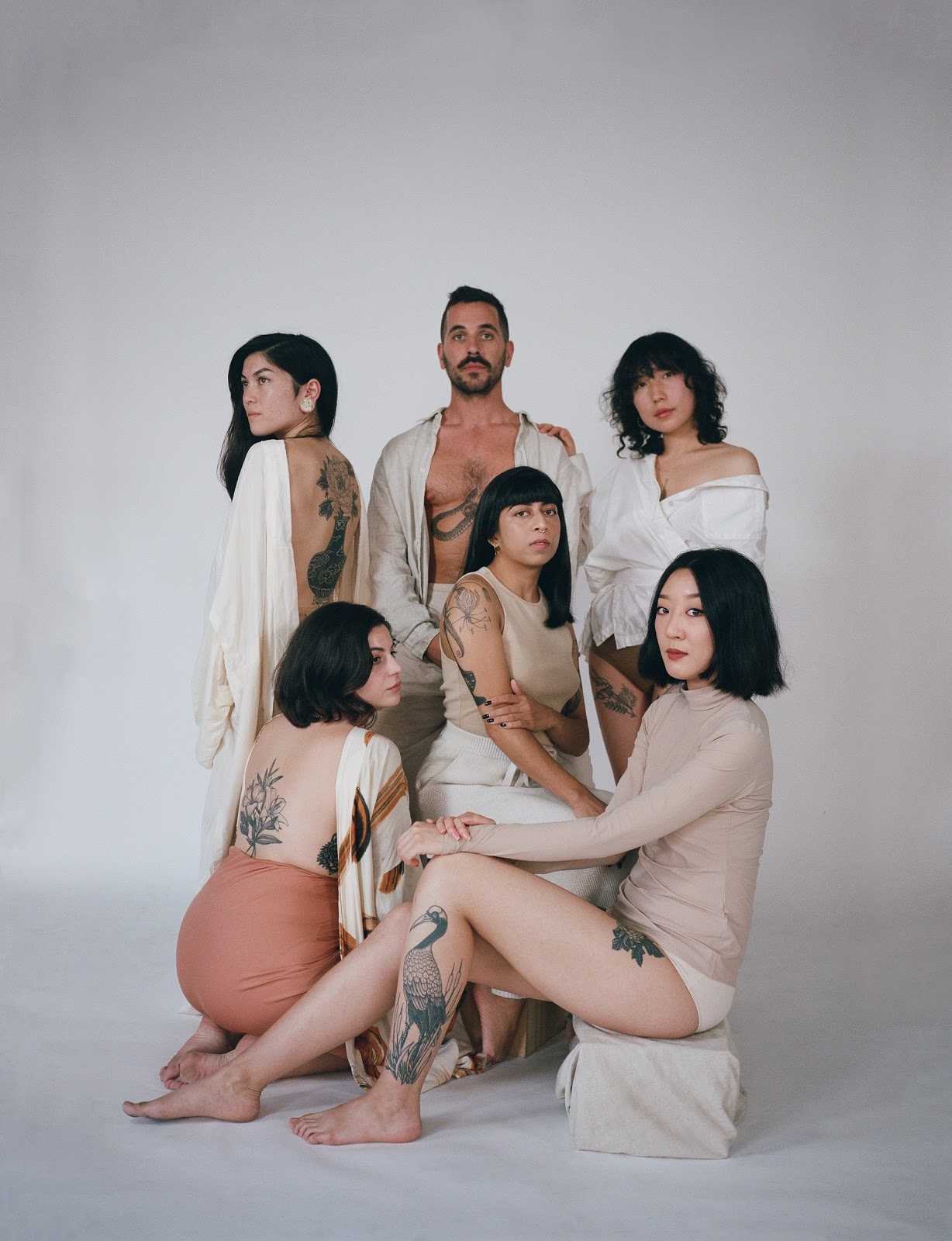By Stephanie Bal
I have an arrow tattoo on my wrist. On some days, it feels like it takes up too much space on my arm, creeping through my shirt sleeve when I shake hands in places where a tattoo shouldn’t be seen. On other days, it feels too tiny. The opening night of Our Bodies, Our Voices, Our Marks, a three-level photo exhibition featuring tattooed bodies at the Immigration Museum, was one of those days.
The central hallway, Documenting the Body, hosts a floor-to-ceiling photo series of six people, all inked by Melbourne-based tattoo artist Paul Stillen. The focus here is on contemporary perspectives with black-ink botanicals and Greek, Indian and Chinese motifs from their family’s heritage. There’s even a nod to Australian wattle. The thin-lined minimalism and lack of colour contrasts what’s upstairs. I’ve managed to keep my arm-length botanical tattoo dream confined to a Pinterest board, but this exhibition brought it all up again.
I walked by a video playing on a small screen and Stanislava Pinchuk, the Ukrainian–Australian artist and tattooist who curated Documenting the Body said, ‘to transform the body is an act of dreaming and an act of belonging, an act of separation and standing out.’ My teeny-tiny tattoo was wholly accepted there, and I still felt like I stood out – or, didn’t stand out enough. Here, my skin was too bare.
Take the stairs to the first level and you’ll step into Tatau: Marks of Polynesia. Samoan songs play cheerily in the background and the photographs and quotes spread along the walls weave a story of culture and community. “It’s not just a tattoo. Whenever I talk about tattoos, I talk about my family; I talk about my life” is written in thick bold letters on one wall, a quote from Samoan tattooist Su’a Sulu’ape Peter. Tools of the ancient art form are on display – a turtle shell, boar tusk and sea-urchin spine. Each tatau is a testament to endurance and keeping alive a long-lasting tradition and beautiful culture.
Perseverance: Japanese Tattoo Tradition in a Modern World colours the second floor. Japanese motifs like the tiger, snake, dragon and phoenix are inked in delicate lines of vivid jade, orange and purple that span entire backs. Perseverance comes from the Japanese concept of gaman. The photographed people stand in frames with clenched fists – determined. The government has tried to take their art, their identity, from them – tattoos were banned in Japan from the late 1800s to the 1940s, and societal stigmas are still rampant. Tattooing became associated with criminals and even today, it’s dismissed as underground. Hot springs ban natives with tattoos, but welcome inked visitors. It’s controversial and confusing. ‘Perseverance is one of the first major museum exhibitions to examine traditional Japanese tattooing as a full-fledged art form in its own right’ is written proudly on a wall in the exhibition, alongside inked people in frames who still stand with stamina.Our Bodies, Our Voices, Our Marks explores the idea that tattoos are more than ink, more than body art; it was a beautiful addition to conversations around identity, culture and self-expression. It made me pause and think about the years and practices that have led us to the local tattooist we see today.
Our Bodies, Our Voices, Our Marks is now open at the Immigration Museum until October.

